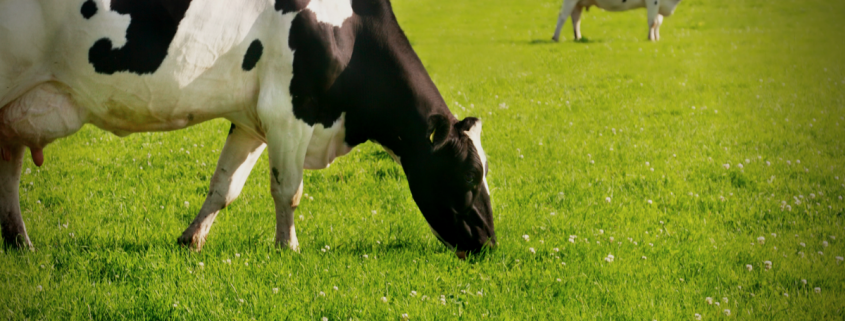Turnout to grass – Top tips for dairy cow nutrition
Author: Jack Scallan – Ruminant Feed Specialist
Turning cows out to spring grass is a major event in the annual dairy calendar. At this stage, there are many physiological changes taking place in the cow, such as recovering from the calving event and restoring optimum BCS to reaching peak milk yield. These changes are also occurring at a time when dry matter intake does not meet energy demands otherwise known as NEB (Negative Energy Balance) and the diet itself is constantly changing.
So, here are a few tips worth considering at turnout to grass:
- Gradual Turnout. On/off grazing for a few hours per day for 2-3 weeks before full turnout, weather and ground conditions permitting, is of huge benefit, as it allows the microbes in the rumen to adjust from an indoor silage based diet to an outdoor grass based diet. This process normally takes about 3 weeks.
- Dry Matter Intakes (DMI). Grass is a very useful feed but varies quite a lot in quality and at times quantity. The dry matter of the grass can range from well below 10% in spring to over 20% in summer. A cow would need to eat 100kg of fresh grass at 15% DM if she is to take in 15kg of grass dry matter. At 10% DM, she would need to consume 150kg fresh grass to achieve an intake of 15kg grass dry matter. The variation in grass DM has a major influence of BCS, fertility, milk yield and quality.
- SARA (Sub Acute Rumen Acidosis). This is very common in spring calving herds on lush leafy spring grass. Lush leafy spring grass tends to have low levels of structural fibre (e.g. lignin,) and high sugar levels which impacts on rumen function which in turn leads to SARA. SARA will compromise milk yield, milk protein and fat percentages, while a prolonged period of SARA will negatively impact on fertility and BCS.
- Fat and Protein. Spring grass contains high levels of unsaturated fatty acids which can negatively affect milk fat percentage. Spring grass will also contain high crude protein levels, particularly after fertilizer application. Excessive dietary crude protein will result in high urea levels in milk and blood which will also negatively affect BCS and fertility.
- Buffer Feeding. Feeding a high energy, high dry matter forage, such as maize silage, will help counteract the variances of a grass diet in spring/early lactation. This will help to balance DMI and regulate rumen function.
- Concentrate Feeding. As grass and a buffer feed, on their own, will not meet the nutritional demands of early lactation, it is necessary to feed a concentrate at grass. The concentrate (pellet or coarse ration) must compliment the grass. A pellet/ration with about 14-16% crude protein ( 15% maximum for derogation purposes) with a highly digestible fibre content (sugar beet, soya hulls) and a good source of energy ( barley, maize) will be achieve this. The diet must be balanced with the correct levels of minerals and vitamins, such as magnesium (for grass tetany), etc.
- Monitor the cows. Throughout the grazing season, and particularly in early lactation, the cows should be regularly checked as changes in BCS, dung consistency, cudding rates, general health status, etc. can indicate an imbalance in the diet.
Further Information:
To view more articles from our spring newsletter, please click here.
Get In Touch
For the most up to date information on our products and services, please click here or follow us on Facebook and Twitter.



